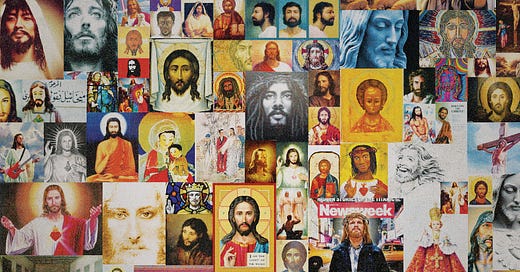The Most Studied Artifact in History—and the Face It Reveals
C.S. Lewis Kept It in His Bedroom. I've Hung It in My Den.
What does God’s face look like?
For many, the image of God is shaped by Western art—a stern old man, high above, peering down with disapproval.
Think Michelangelo’s Sistine Chapel: a bearded deity reaching toward Adam, serious, distant, powerful.
But what if that’s not the face of God at all?
What if His face is one of delight, of kindness, of love?
One of the most well-known blessings in the Hebrew Bible paints a different picture:
"The Lord bless you and keep you; the Lord make his face shine on you and be gracious to you; the Lord turn his face toward you and give you peace." (Numbers 6:24–26)
Yahweh’s face shining upon us. That’s the image. Not a frown of disappointment but a face beaming like a father looking at his child. A smile of love, warmth, and blessing. What if this is how we were meant to picture God?
The Face of God, Made Flesh
John’s Gospel makes a bold claim: "The Word became flesh and made his dwelling among us" (John 1:14).
God, the invisible, became visible. The Logos put on skin. He walked among us, laughed, wept, and shared meals.
Jesus had a face.
He had eyes that saw the hurting. A mouth that spoke words of life. A brow that dripped sweat and blood. A face turned toward the broken, the outcast, the sinner.
But what did He look like? Where does our imagination of Jesus’ face come from?
A Mysterious Image
Many believe one of the most fascinating possibilities lies in a relic housed in a church in Turin, Italy—the Shroud of Turin.
It is one of the most scientifically studied artifacts in history, yet no one can fully explain it.
The image on the shroud is a photonegative, a concept that didn’t even exist when the cloth was purportedly created in the Middle Ages. In fact, its full image was only revealed in 1898, when an Italian photographer, Secondo Pia, captured a photo and saw, for the first time, a hauntingly detailed image of a crucified man.
Recently, podcaster Joe Rogan shared a YouTube video by Dr. James Campbell, a 48-minute deep dive into the mystery of the Shroud. The video has amassed nearly 2 million views, evidence of the enduring curiosity surrounding this ancient cloth.
Even modern science struggles to explain how the image was formed.
The Face of Christ
A few months ago, I came across an intriguing anecdote: C.S. Lewis, the great Christian thinker and writer, had a framed photo of the face from the Shroud of Turin hanging in his bedroom at The Kilns, his home in Oxford.
The photograph was a gift from his friend and correspondent, Sister Penelope Lawson. Lewis reportedly found it deeply moving, saying it helped him grasp the humanity of Christ—not just in theory, but in reality.
For Lewis, who once described Christianity as "the myth that became fact," the reality of Jesus’ face was no abstraction. It was real.
And if this image is authentic, then this could be the face of God in human form.
A face of suffering.
A face frozen in the rigor mortis of death.
A face that lay in the stillness of the tomb on Holy Saturday—just as God once rested on the seventh day of creation.
Lent: Waiting for the Face to Shine Again
Lent is a season of waiting. Of stillness. Of longing for light to return.
Last year, inspired by Lewis, I purchased a replica of the Shroud of Turin. It hangs in my den, just above the chair where I often sit in quiet prayer.
Whether or not the artifact is genuine—I believe it is, but even if it isn’t—it speaks. It draws me into the mystery. It stirs something ancient and tender in me.
As I gaze upon the faint image woven into that cloth, I remember:
God has a face.
A face of compassion. A face lined with grief. A face marked by victory.
And one day soon—come Easter morning—that face will shine again.





